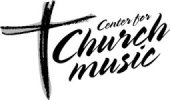Center For Church Music, Songs & Hymns

Browse Hymns:
Browse by:
We Invite You To Sing
To sing with us, 1) Click on the music thumbnail icon to view the sheet music (you don't have to read music!), and 2) Engage the audio file by clicking on the Real audio or Mp3 file.
Find Songs And Hymns
Facts:
Lyricist: Samuel John Stone
Lyrics Date: 1866
Key: E flat
Theme: The Church
- Composer: Samuel Sebastian Wesley
Music Date: 1864
Tune Name: AURELIA
Meter: 7.6.7.6.D.
Scripture: Ephesians 2:20
Devotional:
I will build my church and the gates of Hades (Hell) will not overcome it.
Jesus in Matthew 16:18
For years, a favorite indoor sport of Americans was bowling. Now, this seems to have been replaced with a new sport…attacking the Christian church, the body of Christ.
"The church" quipped one writer, "resembles a group of porcupines huddling together in a storm, trying to keep warm." Another pundit wrote that the church resembles Noah&rsquo...
See More
I will build my church
and the gates of Hades (Hell) will not overcome it.
Jesus in Matthew 16:18
For years, a favorite indoor sport of Americans was bowling. Now, this seems to have been replaced with a new sport…attacking the Christian church, the body of Christ.
"The church" quipped one writer, "resembles a group of porcupines huddling together in a storm, trying to keep warm." Another pundit wrote that the church resembles Noah’s ark: "If it weren’t for the storm on the outside one couldn’t stand the stench on the inside."
But, the church is one of only two groups that God declared necessary for the world that He created. The first, given before the Fall, is the family. The second, given after the Fall, is the church. Our hymn sings both of the importance of the church and of her permanence.
One stanza, of the ten the author wrote, reads:
"The church shall never perish!
Her dear Lord to defend, to guide, sustain and cherish,
is with her to the end;
Though there be those
that hate her
and false sons in her pale,
against a foe or traitor
she ever shall prevail."
If the church could speak today, she might well say:
- I was the first to speak out against slavery in England and America, even though, sadly, some of my members thought it was their God ordained right to own slaves.
- I was the first to stress the value of each individual person because it was my Founder who said, ‘Even the hairs on your heads are numbered by My Father.’
- I was the first to raise the position of a woman so she became a person and not a piece of property.
- I was the first to care for those who are mentally challenged
- I was the first to fight for child labor laws so that children might be able to laugh and learn rather than working 18 hour days.
- And I am still the only one that exists for the purpose of sharing Jesus Christ, the "Way, the Truth and the Life."
Relish your role in this vital assembly—that is, the body of Christ—and contribute to her wellbeing. And if you are not a part of her…
See Less
Hymn Story:
In 1860, a volume entitled "Essays and Reviews" caused controversy in the Anglican Church. It questioned the historical accuracy of Scripture. A few years later this idea was furthered by John William Colenso (1814 -1883), the bishop of Natal in South Africa, who published The Pentateuch and the Book of Joshua Critically Examined (1862-63). This book denied that Moses wrote the Pentateuch, called Joshua a myth, called the books of Chronicles fictitious and disputed the accuracy of...
See More
In 1860, a volume entitled "Essays and Reviews" caused controversy in the Anglican Church. It questioned the historical accuracy of Scripture. A few years later this idea was furthered by John William Colenso (1814 -1883), the bishop of Natal in South Africa, who published The Pentateuch and the Book of Joshua Critically Examined (1862-63). This book denied that Moses wrote the Pentateuch, called Joshua a myth, called the books of Chronicles fictitious and disputed the accuracy of Christ’s statements about Moses.
The bishop of Cape Town, South Africa, Bishop Gray, supported by 40 other bishops deposed Colenso for his heresy. A battle ensued, as Colenso refused to submit. A court confirmed his deposition but Colenso appealed to a secular court, the Judicial Committee of the Privy Council and he was reinstated. This created a schism in the South African church that lasted until Colenso’s death.
During this time the Reverend Samuel John Stone, one of Bishop Gray’s supporters, was concerned about people saying the Apostles Creed in a perfunctory manner, saying the words without a clear understanding of what they were saying. He wrote a series of twelve hymns, each explaining a section of the creed and defending the fact of the inspiration of Scripture. "The Church’s One Foundation" explains the ninth article – "I believe in the Holy Catholic (Universal) church, the communion of the saints." This series of hymns was printed in Lyra Fidelium (Lyre of the Faithful) in 1866.
The controversy between Colenso and Gray is referenced in this hymn in stanza 3, "Though there be those that hate her, and false sons in her pale" and stanza 4, "With a scornful wonder, men see her sore oppressed, by schisms rent asunder by heresies distressed."
Originally this hymn had 7 stanzas. In 1868 this hymn was included in Hymns, Ancient and Modern with 5 stanzas, omitting the original third stanza and combining the second halves of the sixth and seventh stanzas as stanza 5. Most hymnals use that version. In 1885, three more stanzas were added to the original hymn, giving a total of 10 stanzas, to be used for an ecclesiastical processional hymn in the Salisbury Cathedral.

